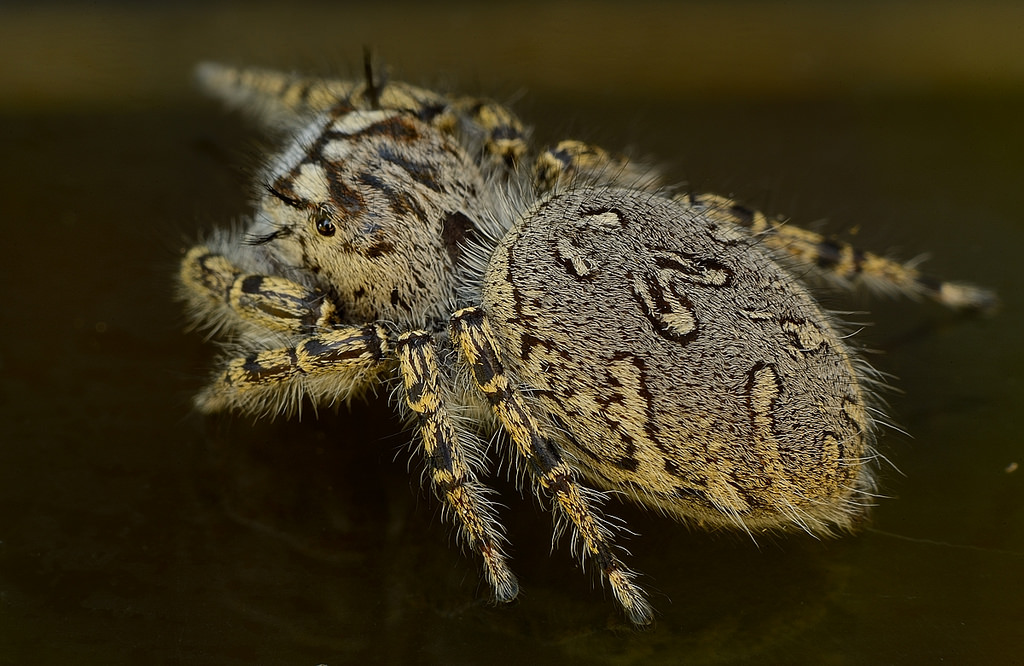Map Snapshot


1 Record
Seasonality Snapshot
Use of media featured on Maryland Biodiversity Project is only permitted with express permission of the photographer.
A female Phidippus mystaceus in Worcester Co., Maryland (10/16/2016). Verified by Giff Beaton.
View Record Details
Media by
Bob Cammarata.
A female Phidippus mystaceus in Worcester Co., Maryland (10/16/2016). Verified by Giff Beaton.
View Record Details
Media by
Bob Cammarata.
Source: Wikipedia
| Phidippus mystaceus | |
|---|---|

| |
| Female | |

| |
| Male | |
| Scientific classification | |
| Domain: | Eukaryota |
| Kingdom: | Animalia |
| Phylum: | Arthropoda |
| Subphylum: | Chelicerata |
| Class: | Arachnida |
| Order: | Araneae |
| Infraorder: | Araneomorphae |
| Family: | Salticidae |
| Subfamily: | Salticinae |
| Genus: | Phidippus |
| Species: | P. mystaceus
|
| Binomial name | |
| Phidippus mystaceus (Hentz, 1846)
| |
| Synonyms | |
| |
Phidippus mystaceus is a species of jumping spider that is found in North America. Females grow to about 1 centimetre (0.39 in) in body length.
Etymology
[edit]The species name is derived from the Ancient Greek mystax, meaning "moustache", which the females of this species feature. An older synonym of the species is P. asinarius, referring to the markings above the eyes that look similar to donkey ears.
-
Adult female
-
Anterior median eyes of an adult female
-
Adult male feeding on a Chrysopid
References
[edit]Further reading
[edit]- Roach, S.H. (1988). Reproductive periods of Phidippus species (Araneae, Salticidae) in South Carolina. Journal of Arachnology 16:95-101. PDF. Archived 2006-05-14 at the Wayback Machine
External links
[edit]Wikimedia Commons has media related to Phidippus mystaceus.




